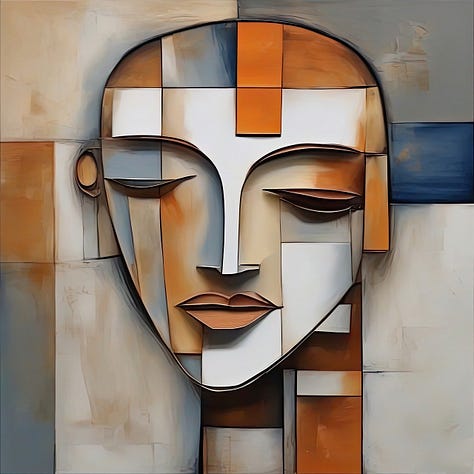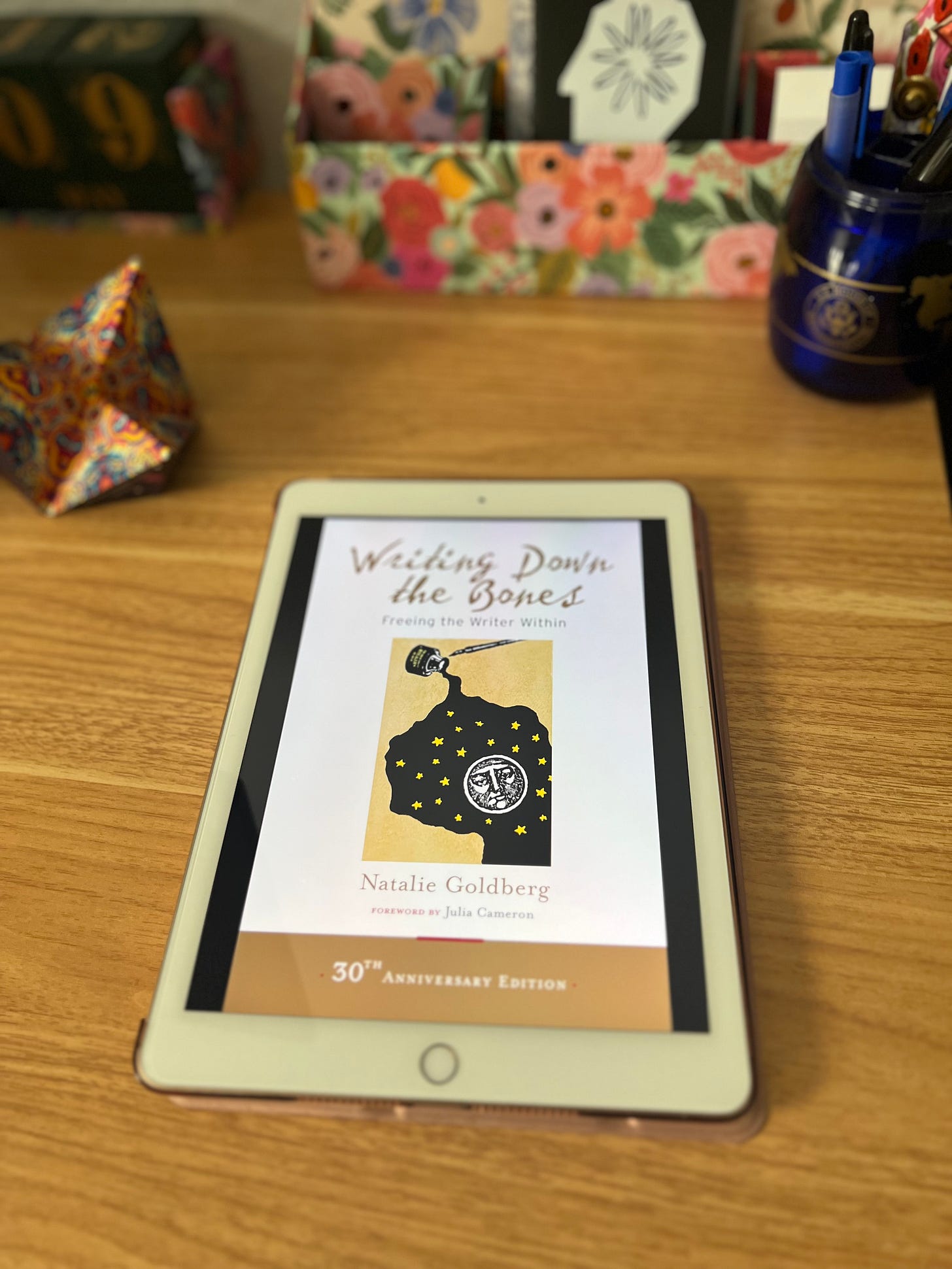How I Get Myself to Sit Down and Write
Four tactics to battle the procrastination gremlins
Over the years, I’ve felt the desire to write creatively but never formed a discipline to do it consistently. I think a lot of people struggle with this dilemma: the simultaneous wish to be creative but the inability to execute on that desire.
I’ve researched this topic extensively for about a decade and think I've finally gathered a collection of tools and skills that help me get past most of the major obstacles keeping me from picking up a pen or opening my laptop. I'm sharing them with you all. Maybe this will help you get going on your creative project.
I've found that there's three major reasons that I can't get myself to put words on a page. They are: 1) fear I'm terrible, 2) writing sounds boring/tiring/hard, 3) I don't know what to write. Each of these problems have their own solutions, so I'll group them accordingly.
What to do with the fear of terrible
For many years, little stories and ideas would pop into my brain. I'd be driving to work, or washing dishes, or laying in bed trying to sleep. A beautiful story would come to me and play out like a movie in my head from beginning to end with lush details like purple sunsets and perilous ravines and azure water. I'd tell myself that when I had a moment, I'd write the story down.
But if I ever had a moment to write--which I rarely did--I often couldn't get the words out. I'd sit there staring at the blank page, paralyzed. When I finally got the pen moving on paper, all that would come out would be my brain saying things like “I don’t know how to write this….There’s a purple sky I think…I am terrible at this…” Everything that came out was garbage and I was loathe to continue. The beautiful images in my head were stuck there, caged. After a few minutes I’d stop trying to write and go on with my day. This went on for years. There were so many stories that my mind created and killed.
How did it all change? It's a very simple solution. It's this: I give myself permission to write garbage for as long as my brain needs it.
If I have a beautiful story in my mind and I can't get it out, I just let myself write all sorts of stream of consciousness brain vomit until I start getting glimpses of the images in my mind that I want to convey come out on the page. The master of this technique is the utmost queen Natalie Goldberg who wrote the book Writing Down the Bones. This book is absolute cannon for writers and creatives. It taught me that we often have to give that self-critical voice in our head the power to run the show for a little while.
I find that after writing pages and pages of garbage, of letting that voice just spew its vitriolic condescension and criticism onto the page, my consciousness becomes bored of it, and then I can just start saying the things I really want to say. The words I actually want start coming out little by little in small drips and drabs and eventually a tidal wave.
Even then, the story isn't what I imagined in my head. The prose sucks and the pacing is off, and it's not beautiful in the way that I want. But it's there. The bones of it are there. And the next time I sit down to write, I can edit the terrible prose, and fix the weird rhythm and add the imagery I want. It happens in this layered way. Writing is not linear. So we just have to go with it, however it comes out.
What to do when writing sounds boring/hard/tiring
Once I figured out that my own mind was stopping me from writing the stories, the other gremlin I had to deal with was the actual work. Writing is hard. It's not always fun. It takes effort. I have to bend my brain in ways that it doesn't always want to bend. At the end of a long day, when my mind is mush, the last thing I want to do is make it do more work. How do I get myself in front of a blank doc and not Netflix?
Here's my trick: I consume writing-related content.
I need an on-ramp to productivity. When the idea of sitting down at my desk and opening my laptop to write feels too burdensome, I just tell myself I'm going to watch some author-tube and it makes getting to my table so much easier. I look forward to consuming writing content. And somewhere along the way of doing that, I start looking forward to doing the writing myself.
My writing routine typically starts with me watching about 15 minutes of author-tube (my current favorite is Christy Anne Jones), or reading a book about writing (e.g., Writing Down the Bones), or listening to a podcast about writing (e.g., Writing Excuses). It's a little counter intuitive. I'm trying to get myself to have an output--to produce writing. It seems nonsensical to spend time, then, to watch other people doing it instead. But it works. I see and hear all these other writers doing their work and I feel inspired to get going on it myself. After about 15 minutes of watching Christy show me how she spends her morning writing, I am ready to go face down that blank page.
The key to using this strategy is to pick what I consume very carefully. If it's a binge-worthy Netflix show, I'll never get to writing. If it's a boring textbook, I'll want to crack it open even less than I want to write. The perfect middle ground for me has been watching or reading or listening other writers share how they approach the writing process in an entertaining way. Give it a try yourself. Come back and tell me if it worked.
What do to when I don't know what to write
Two strategies have helped me with this: 1) PARA and 2) adding limits.
Use PARA to capitalize on existing ideas.
One of the hardest things about having a Substack so far is knowing what to write. What could I possibly say about my day that people would want to read? What can I put out in the world that might help someone, or inspire them, or make them feel more connected to like-minded people?
Something that I've found helpful is reviewing my own ideas for Substack posts that I jotted down weeks ago. Sometimes good ideas come to me at odd times. I'll be reading an article or folding laundry. And I'll think to myself: huh, I should write about that for my Substack. I'll open up the OneNote app on my phone and quickly write a sentence describing the potential Substack post. And then go back to folding laundry.
The idea for this current post came to me weeks ago and I had the wherewithal to capture it in OneNote. And my OneNote was organized enough for me to find the idea when I sat down to write for Substack this afternoon. I still marvel that I can do that now--use helpful ideas and resources my brain creates at odd times.
How did I start doing this? Using PARA--a system described by Tiago Forte in his book Building a Second Brain.
PARA stands for: Project. Area. Resources. Archive. The thing about PARA that makes it helpful for me is that the information I need is tiered in layers of relevance to projects that I'm working on. The Projects folder has all the salient information for my current major tasks. The archive is stone cold dead and I never open it, but if I search OneNote for a topic and the archive has a relevant note, it'll pop up. I've organized all the information in my life this way--my icloud drive, my Google drive, my local mac files, and my OneNote app are all organized by PARA.



PARA implements the Inbox and weekly review that is the genius part of Getting Things Done ("GTD")--an organizational method invented by David Allen. I highly recommend reading that book as well if you haven't already. The crux of the strategy is that you put every relevant floating piece of information and task (all the "open loops") in your brain in a physical or digital inbox folder and then you sort that Inbox on a regular basis into project folders (or also within "Area" or "Resources" if you're using PARA). New information that pops into my head at random times goes into an "Inbox" folder, and I sort those notes into appropriate sub-folders in Project, Area, or Resource when I'm sitting on BART or waiting in line at the grocery store. Finished projects get moved into the Archive folder.
It's kind of funny that a file sorting system is what I recommend for helping creatives know what to create. But it's super useful! PARA and GTD is the reason I can actually act on the many ideas that my brain is constantly populating. So when I sit down to do a task that needs some sort of creativity, I don't need to induce a brainstorm, I can just look at my existing thoughts on the subject.
Add limits to your creative medium to spur ideas
Another really important tool for me in doing creative work is adding a limitation or two. Often I find that the hardest/scariest part of starting a creative project is dealing with the sheer volume of possibilities available. What do you do when you have a blank canvas? There are a million colors, brushstrokes, styles, subjects, techniques. How do you choose which one you want to use? What do you give your time and effort? Going from nothing to something is so hard when you have no vision for what you want.
That's where I think limits form the backbone of creation. Necessity is the mother of invention. If I have to get my words into a 5-7-5 syllable format for haiku, my brain will automatically start coming up with ideas for words that can fit into that framework. This is the reason why writing prompts are helpful. The brain is designed to solve problems. If I don't know what to say, I just give my brain a box and tell it to fill the box with useful things.
I think that really prolific writers become good at writing constantly because they discover a framework that works well with what they're trying to share with the world and what the world likes to read. I learned recently that Emma Gannon has three types of posts: “a thread, a post, and a round-up.” I just subscribed to her Substack and don't know what those mean yet, but I'll come to find out, I'm sure. Tim Denning has a really specific format. His posts are typically listicles with big headers that provide the crux of his idea. His gift is writing motivational posts that feel like he's yelling at you (in a good way) to get off your a$$ and write something. Anything.
I have no idea why Picasso had so many different styles and movements in his work over the years. But I imagine that he got interested in a particular framework, technique, or set of problems and iterated on those ideas over and over again until he found what he liked.



So my advice (to myself as much as to you) is to try a few frameworks and see if they inspire some creativity.
That’s all I’ve got. Let me know in the comments if you think any of these strategies will help you with your creative work. Or try them and come back to let me know!







One of the most underrated things is the kind of tool you use to physically do the writing on. Using a laptop for long-form writing – with its many distractions, harsh blue light and shallow keys – is like wearing flip-flops to climb a cliff face. Something like a Freewrite or a Micro Journal, or even a typewriter, would be a lot better in that respect. Even just a decent mechanical keyboard goes a long way to making the process more comfortable. It's about improving ergonomics for the hands, eyes, and mind.
This is super helpful Noor! For years my biggest obstacle has been "I don't know what to write," but typically in the sense of having too many ideas, not too few. But I think some of the solutions are the same. Getting ideas organized with a system like PARA is a way to tame the noise and soothe the analysis paralysis by ensuring I'll eventually come back to any meaningful ideas, even if it's years down the line, giving my brain permission to focus and commit to one in the present.
This same thinking is why I've made my novel pipeline public. Check it out on my sit if you're curious! https://www.takim10yearsovernight.com/